History
Forest Hills Stadium has played host to some of the most important cultural moments of our time. Over the course of its 100-year history, the storied venue has drawn legendary musicians at the height of their influence and iconic athletes who have set records and even broken color barriers.
Take a look back at just a few of the Forest Hills Stadium figures and moments that have impacted our culture.

Arthur Ashe
Raised in the segregated south of Richmond, Virginia, Arthur Ashe overcame the obstacles of racism and poverty to plant himself at the highest level of men's tennis by winning the first U.S. Open played in Forest Hills in 1968. Ashe, still an amateur, beat all pros and amateurs in a field that included most of his era's greatest players in a monumental victory that defined one of the finest of moments in The Stadium's history. Ashe would use the fame that accompanied his victory at Forest Hills to advocate for those marginalized because of race, economics, and ultimately the AIDS virus. His advocacy culminated in a speech he gave at the United Nations in 1992 imploring compassion and help for all victims of AIDS, the disease that took his life the next year at the age of 49.

The Beatles
More than 31,000 fans jammed into Forest Hills Stadium over two nights in August of 1964 to welcome England's Fab Four - an attendance record that stands at the Stadium to this day. The Beatles landed at 3:00AM on the morning of the show at Kennedy Airport, greeted by 3,000 waiting fans. Twelve hours later, The Beatles flew by helicopter from Manhattan to the Stadium to kick off their legendary '64 US tour. Each of the venue's 15,983 seats were filled when they took the stage at 9:50PM after a short set by "Little" Stevie Wonder. An eight-foot fence topped with barbed wire and a large field of grass tennis courts - empty except for police barricades arranged almost like an obstacle course - separated the band and the roaring crowd. The Beatles dug into what would be their standard twelve-song set for the '64 US tour, accompanied by a crowd made up mostly of teenage girls who did not stop screaming for the entire 63 minutes. The band opened with "Twist and Shout," pulled off a frenetic cover of Chuck Berry's "Roll Over Beethoven," and ended the night with "Long Tall Sally."

Maureen Connolly
Maureen Connolly Brinker, also known as "Little Mo," made history at Forest Hills in 1953 when she defeated Doris Hart in the U.S. Championships finals and became the first woman to complete the Grand Slam of tennis, winning the four major championships in a calendar year: Wimbledon, The U.S., French, and Australian Championships. Born in San Diego, California, Little Mo was coached by the legendary Eleanor Tennant, who taught her a game that relied heavily on groundstrokes and little on net play. That style led her to be the most successful teenage prodigy in the history of her sport. She won her Grand Slam when she was just eighteen years old. Unfortunately, Little Mo's career ended just a year later in 1954 when a horseback riding accident seriously injured her right leg, but she left the sport with nine major championships in less than four years. The tennis world mourned her retirement, but she accepted the circumstances gracefully, saying "Tennis is a wonderful game and I leave it with no regrets."
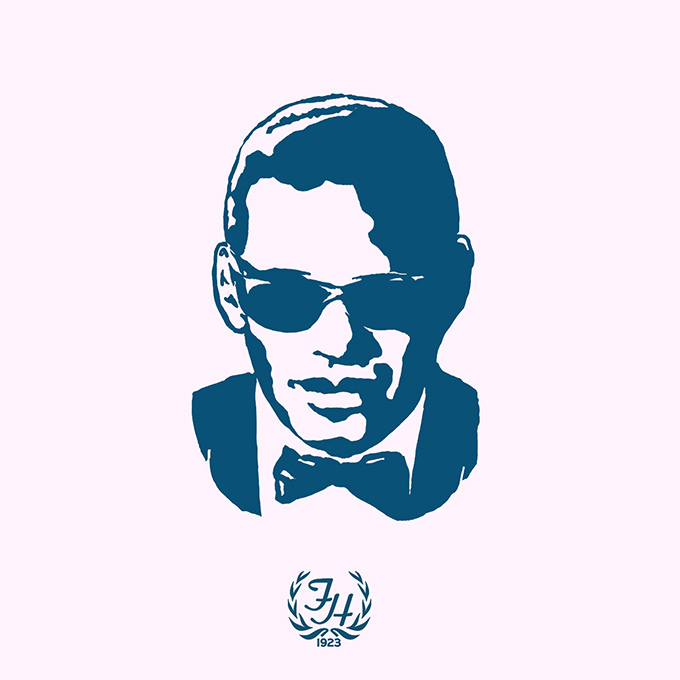
Ray Charles
Ray Charles first took the stage at the Stadium as part of The Forest Hills Music Festival in 1963 on a bill that included Peter, Paul and Mary, Ella Fitzgerald, The Dave Brubeck Quartet, Odetta, Bud and Travis, The Tarriers, Judy Henske, The New Lost City Ramblers, The Kingston Trio and Johnny Mathis. He returned three years later, on July 2, 1966, as part of a legendary bill featuring Nina Simone. The performance capped off a stellar comeback year for Charles that which included a series of hits, most notably "Let's Go Get Stoned," his first No. 1 R&B single in several years. Ray Charles, often referred to as "The Genius," displayed that trait with the way he combined elements of gospel and blues and country to create what would be known as Soul music. When asked what "Soul" means to Charles, he said that soul is a "force that can light a room. The force radiates from a sense of selfhood, a sense of knowing where you've been and what it means. Soul is a way of life - but it's always the hard way."
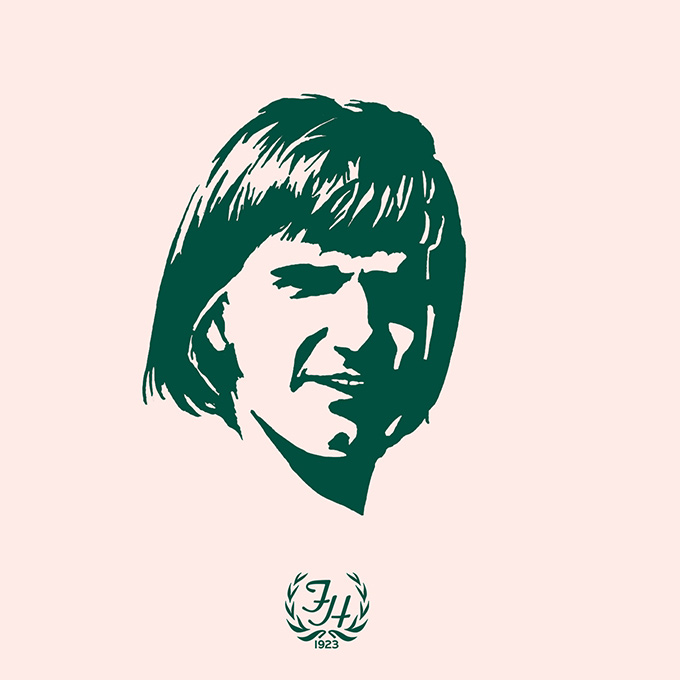
Jimmy Connors
Jimmy Connors along with then-fiancé and fellow champion Chris Evert took center stage at Forest Hills as America's sweethearts in 1974. The love affair with Evert was short-lived, but his relationship with the U.S. Open has been long. A true outsider , Connors was as loved as he was hated. He quite literally formed an army of one when he started his own professional tennis association in 1973, the Independent Players Association (IPA), of which he was the only member. He was a powerful baseliner with impressive serving and volleying skills. Remarkably, he was the only player to win the U.S. Open on all three surfaces— grass and clay at Forest Hills Stadium and hard courts at Flushing Meadows.
He won his first U.S. Open in 1974, beginning a dominant stretch of power tennis that closed out the last four years the tournament was played at The Stadium. He reached the final in each of those years, including a 1976 performance in which he plowed through the field and arrived at the final without losing a set, ultimately defeating Bjorn Borg for the title. He would go on to reach the semifinals or better at the U.S. Open for thirteen consecutive years after the tournament moved to Flushing Meadows in 1978. His U.S. Open career culminated in 1991 when, at 39, he thrilled tennis crowds in his final trip to semis at Flushing Meadows - seventeen years after he won the Open at Forest Hills.

Bob Dylan
Bob Dylan played one of the true landmark shows of his career at the Stadium on August 18th, 1965, when he was 24 years old, weeks after his legendary Newport Folk Festival performance. The scene at Forest Hills was equally charged. While the Newport concert is remembered as the one in which Dylan went electric, the show one month later at Forest Hills Stadium is where he truly put his new style to work. Like his Newport set, for the first half of the show he played nearly a half hour of a warmly received acoustic set that included the debut of "Desolation Row." Dylan then returned with The Hawks, picked up an electric guitar, and turned up the amplifiers to embrace a crowd that was ready to boo.
One song in - as in Newport - his passionate folk music fans began to boo. By the second, calls of "scumbag" were heard in the audience. Later in the show, Dylan unleashed "Like a Rolling Stone," which divided the folkies and rock music fans yet again. In some ways, the song was a microcosm of the divide. The folkies saw Dylan as a hero whose genius shined in protest songs like "Blowin' in the Wind" and "A Hard Rain's a-Gonna Fall," and found his blues rock style as loud and annoying. The rockers simply wanted to let Dylan rock. 51 years later in 2016, Dylan returned to the Stadium with completely different material, including a barely recognizable recasting of "Tangled Up in Blue," to face an adoring crowd that seemed eager to embrace whatever changes Dylan wanted to make.
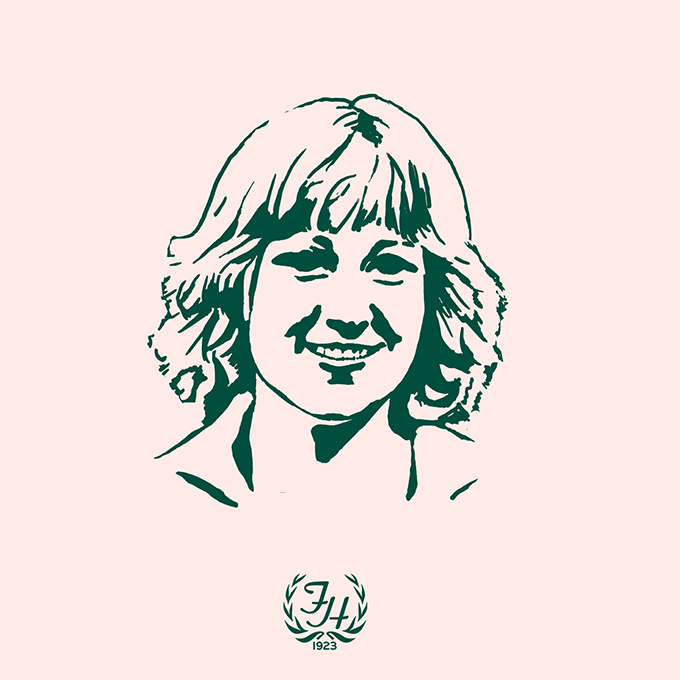
Chris Evert
At sixteen years old, while still a student at Saint Thomas Aquinas High School in Fort Lauderdale, Florida, Chris Evert first captivated the fans at Forest Hills Stadium. Bud Collins said, "She swooshed into the Forest Hills stadium like a Florida hurricane." At that 1971 U.S. Open, her first time playing in a grand slam tournament, she made an epic run to the semifinals, gathering legions of fans with every victory but ultimately losing to Billie Jean King. King said about Evert at the time, "Chris has really helped women's tennis. What it needs is more personalities. If any of the other girls feel jealous about the attention she's received, they should stop and think beyond their own little worlds." Evert's stature only grew from there, and within a few years she had become the most photographed female athlete in the world, often with Forest Hills Stadium as her background. She went on to win The U.S. Open the last three years it was played at Forest Hills, and eighteen grand slam singles titles in total throughout her career. In 1976, she was named Sports Illustrated's Sportsman of the Year - one of only four tennis players graced with that award, the others being Billie Jean King, Arthur Ashe, and Serena Williams.

Jimi Hendrix
Jimi Hendrix still a year shy of international superstardom, was an unlikely opener for the Monkees in 1967. The Monkees began as a bubblegum pop group modeled off the early Beatles and created for TV, but after playing together for a couple years, the Monkees had loftier psychedelic ambitions and were more than excited to have Hendrix on their bill. However, the thousands of teenage girls and their mothers, who were there to see the Monkees play their hits from the TV show, did not know what to make of Hedrix's loud, brooding, psychedelic guitar sound . The Monkees' young fans were confused by Hendrix's overtly sexual stage antics, and when he tried to get them to sing along to "Foxy Lady" they stubbornly screamed "Foxy Davy!" Impatient and angry, the girls booed relentlessly, screaming for their idol Davy Jones. In response, Hendrix left the stage by flipping off the audience and throwing down his guitar, and asked to be released from his contract and the remaining shows on their tour.
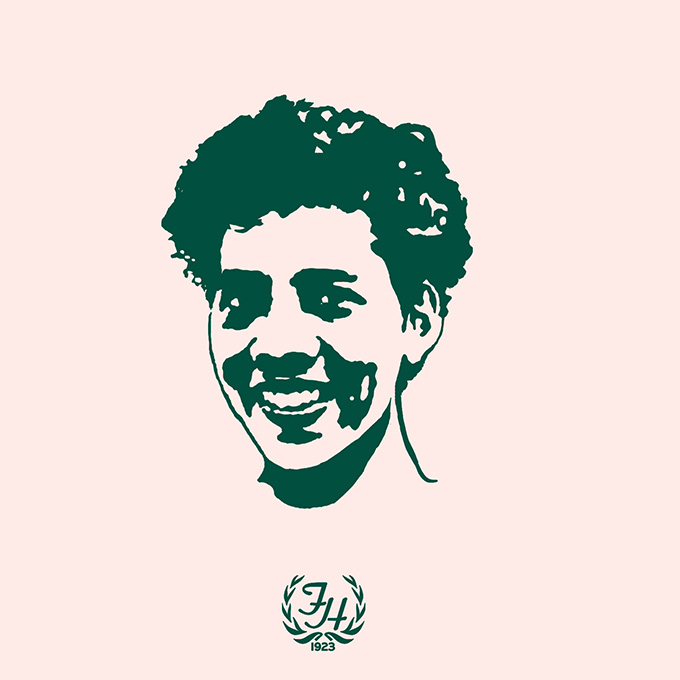
Althea Gibson
Althea Gibson, born in Clarendon County, South Carolina, was the first black athlete to cross the color line of tennis' Grand Slams. When Gibson was three years old, her family moved to an apartment on 143rd Street in Harlem, her parents seeking work as a result of the Great Depression. At the age of fourteen she won the American Tennis Association's (ATA) New York State Championship. The oldest African-American sports organization in the United States, the ATA was initially created as a response to the USTA's ban on black players in the early 1900s, and the organization jumpstarted Gibson's career. After winning several more ATA titles, Gibson attracted the attention of hall of fame mentor Walter Johnson. Known mostly for his mentorship of Arthur Ashe years later, in the mid-1940s Johnson helped Gibson take her game to the next level as well as gain access to the USTA. That access then helped her become the first ever African-American to compete at the U.S. Championships at Forest Hills.
On September 7, 1957, Gibson cleared the final hurdle when she defeated fellow American Louise Brough in straight sets to become the first black athlete to win a Grand Slam. Gibson's victory at Forest Hills brought her international acclaim. She became the first ever African-American featured on the cover of Time Magazine and Sports Illustrated. A year later she followed that performance up with yet another championship at Forest Hills, this time over Darlene Hard. In total, Gibson won eleven grand slam titles in an eight-year career and reached the number one ranking in the world. She was often compared to Jackie Robinson and was a key role model for later tennis superstars such as Billie Jean King and Venus Williams.
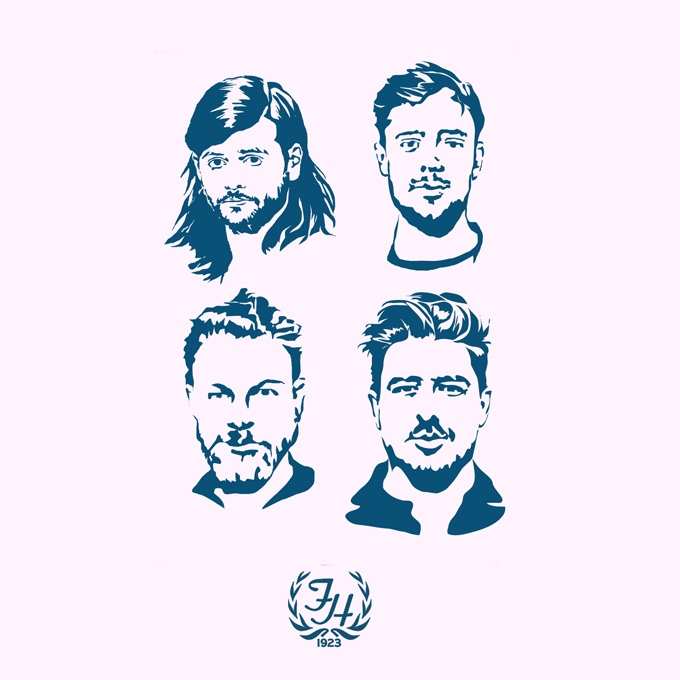
Mumford & Sons
Mumford & Sons kicked off the 2013 rebirth of the Stadium with a now legendary sold out concert. More than 16,000 fans filled the recently revamped stadium as music returned to Forest Hills for the first time in more than twenty years. Keyboardist Ben Lovett welcomed the crowd saying, "Yes, Forest Hills, Queens, New York. We just can't believe you all came. This is amazing … we were like, 'Are you sure you can invite 17,000 people to a tennis court?' It hasn't happened in a long time." Near the end of their set the foursome threw balls to fans in the crowd and played tennis onstage, using with a racquet as well as a guitar and banjo. Closing the night, Marcus Mumford said "We're really proud we're here to revitalize this venue" before singing the final song of the set, "The Cave." The band returned to Forest Hills three years later in 2016 for a triumphant two-night run in a stadium that had been nearly completely transformed since their epochal reopening night in 2013. It was a night that helped to convince many people that music was meant to be at Forest Hills Stadium.
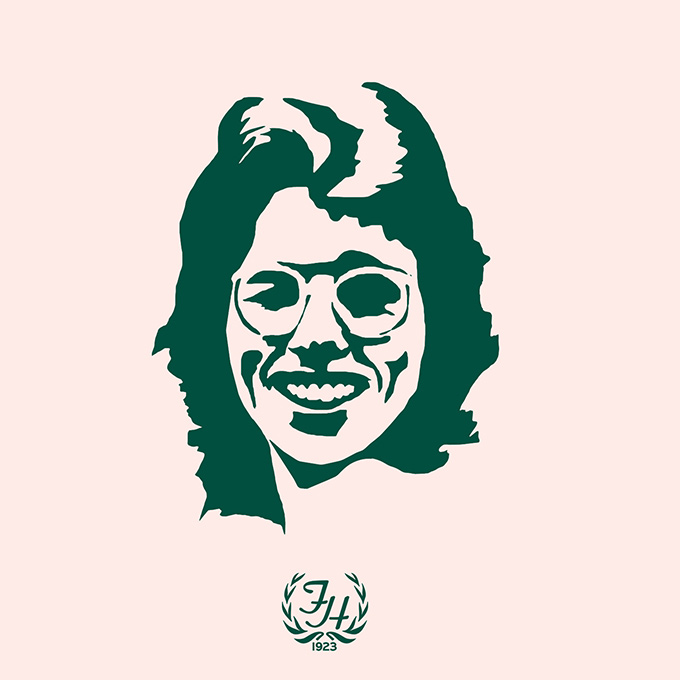
Billie Jean King
Born in Long Beach, California, Billie Jean King won 39 grand slam titles, including eleven U.S. Open championships at Forest Hills. She played with a brash athletic attacking style often at odds with the vision of the women's game of her day. Demanding equal treatment and prize money for women, she helped start the first independent women's professional tennis tour in 1973, and a year later she helped found World Team Tennis, the first co-ed professional tennis league. Seldom afraid of challenging authority, she has been the voice of women's tennis and gender equality for nearly 50 years. In 2006, the site of the U.S. Open was renamed the Billie Jean King National Tennis Center in her honor, 29 years after The U.S. Open left Forest Hills for Flushing Meadow.
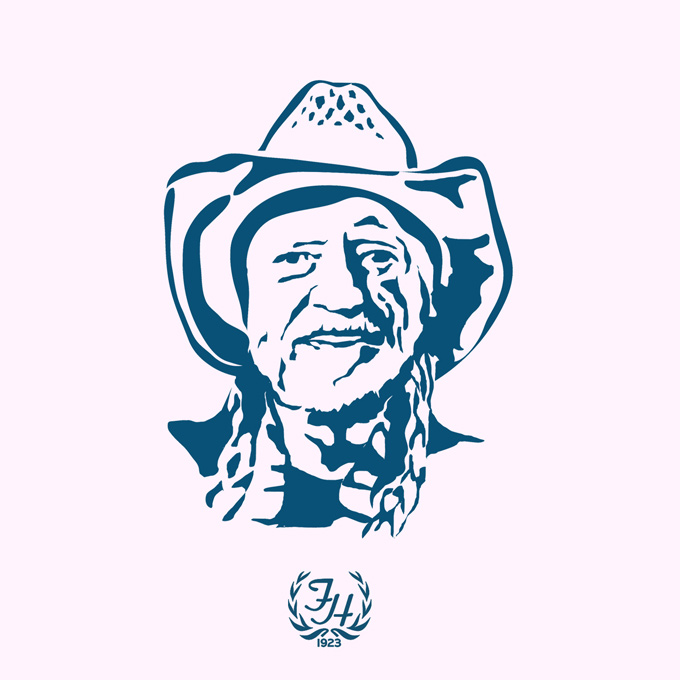
Willie Nelson
On Sept 12, 2018, Willie Nelson joined forces with fellow music legend Van Morrison in one of the great double bills in Stadium history. As a light rain fell, Nelson opened the night to an appreciative crowd with "Whiskey River." He moved slowly through his iconic hits like "Always On My Mind" and "Mamas Don't Let Your Babies Grow Up to Be Cowboys" before turning up the energy with songs like "Jambalaya" and "Roll Me Up and Smoke Me When I Die." He closed the night with a memorable version of the country classic "May The Circle Be Unbroken?" Nelson returned the following year on September 11 with his friends from the Outlaw Music Festival, including Alison Krauss, Nathaniel Rateliff & The Night Sweats, and his son's band Lukas Nelson & Promise of the Real. On a day when they remembered one of the great tragedies in U.S. history, Nelson told stories recalling the unity that day had brought and emphasized the message of strength and love that the city of New York had sent to the rest of the world.

Rod Laver
On September 9, 1969, Rod Laver completed the last Grand Slam in men's tennis history with a U.S. Open victory at Forest Hills Stadium. The achievement capped off one of the greatest careers in tennis. Laver, along with Ken Rosewall, Roy Emerson, and John Newcombe was part of the second wave of celebrated Australian tennis players akin to the British Invasion of pop music. The Australians dominated men's tennis at Forest Hills in the late 1950's and 1960's with Laver as the best of the group. A 5'8" 145-pounder, Laver didn't overpower his opponents, he defeated them instead with speed, agility, a fiery competitive spirit, and a developed game without weakness. "The Rocket" Rod Laver was also only the second man to ever complete a Grand Slam (winning all four major tennis tournaments in a calendar year), a feat he first accomplished in 1962 as an amateur at Forest Hills Stadium a quarter century after the American Don Budge first did it there in 1938. Laver's victory as a pro at The Stadium in 1969 ended a five year exile, as up until 1968 Forest Hills and the other Grand Slams were amateur-only affairs. Laver said about that period, "I won Wimbledon in 1961 and 1962 and got a 15£ voucher and a firm handshake, I just wanted the chance to play against the best players in the world." Despite that unassuming initial amount, Rocket eventually became the first tennis player to earn over $1 million in prize money.
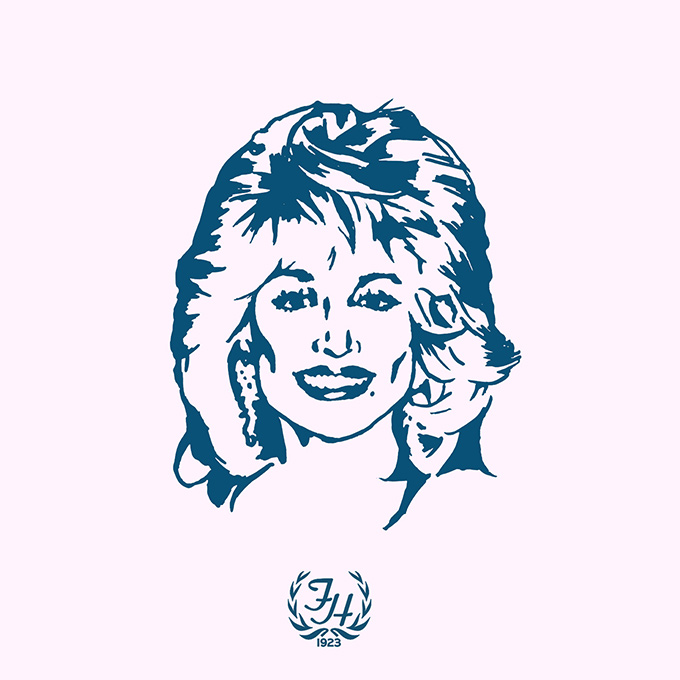
Dolly Parton
Dolly Parton, born in Sevier County, Tennessee, was one of twelve children in a family she described as "dirt poor." Parton began performing as a child, singing on local radio and television programs, and by the age of thirteen, she was recording singles and appearing on The Grand Ole Opry. The day after she graduated high school, Dolly moved to Nashville and made her way first as a songwriter before joining forces with the legendary Porter Wagoner and establishing herself as a major country music star. In the late seventies and early eighties, Dolly's music became more mainstream as she expanded beyond the boundaries of country music and began gaining a sizeable LGBT following. Dolly performed at Forest Hills in 2016 with a set clocking in at just over two hours and featuring hits such as "Jolene" and "9 to 5." Between songs she repeatedly gave statements of love and pride to her LGBT fans and told personal stories from her early days in Tennessee. It was seen by many as the highlight of the 2016 concert series, and by the end of the night many in the crowd had been moved to tears.

Alice Marble
Few tennis players lived as interesting and courageous a life as Alice Marble did. She made her name dominating the competition on the grass courts of Forest Hills, winning both the singles and doubles U.S. Open Championships at The Stadium in four out of five years from 1936 - 1940 before turning professional in 1941. Her career as a professional was cut short by World War II, when she first helped with the war effort by playing exhibition tennis matches to entertain servicemen and promote the sales of war bonds. In 1945, she agreed to spy for U.S. intelligence. Her mission involved renewing contact with a former lover - a Swiss banker - and obtaining Nazi financial data. The operation ended when a Nazi agent shot her in the back while chasing her as she tried to escape in a car, but she recovered.
Marble also greatly contributed to the desegregation of American tennis by writing an editorial in support of African-American player Althea Gibson for the July 1, 1950, issue of American Lawn Tennis Magazine. The article read "Miss Gibson is over a very cunningly wrought barrel, and I can only hope to loosen a few of its staves with one lone opinion. If tennis is a game for ladies and gentlemen, it's also time we acted a little more like gentle-people and less like sanctimonious hypocrites...If Althea Gibson represents a challenge to the present crop of women players, it's only fair that they should meet that challenge on the courts." Marble said that if Gibson were not given the opportunity to compete "then there is an ineradicable mark against a game to which I have devoted most of my life, and I would be bitterly ashamed." At age 23 Gibson was given entry into the 1950 U.S. Championships at Forest Hills, becoming the first African-American player, man or woman, to compete in a Grand Slam event.
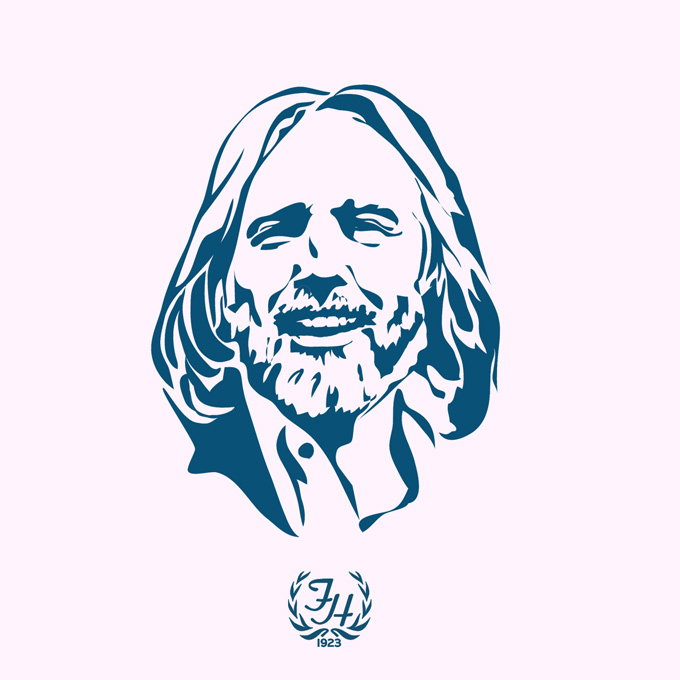
Tom Petty
In two of the strongest and most memorable nights at The Stadium since its 2013 rebirth, Tom Petty and The Heartbreakers thrilled consecutive sold out crowds at Forest Hills Stadium on July 26 & 27, 2017 - his final shows in New York City - three months before Petty's untimely death on October 2, 2017. Petty brought nearly the entire classic Heartbreaker lineup, including bassist Ron Blair, Benmont Tench on keyboards, and Petty's right hand man Mike Campbell on guitar. Petty told a story of the first time he jammed with Campbell when he was looking for a guitarist to join Mudcrutch, and he said that after one run through of "Johnny B. Goode," Petty told Campbell he was going to be his guitarist forever. He signed off with a hypnotic version of "Runnin' Down a Dream" before an encore of "American Girl" and a wave goodbye to more than 15,000 fans.
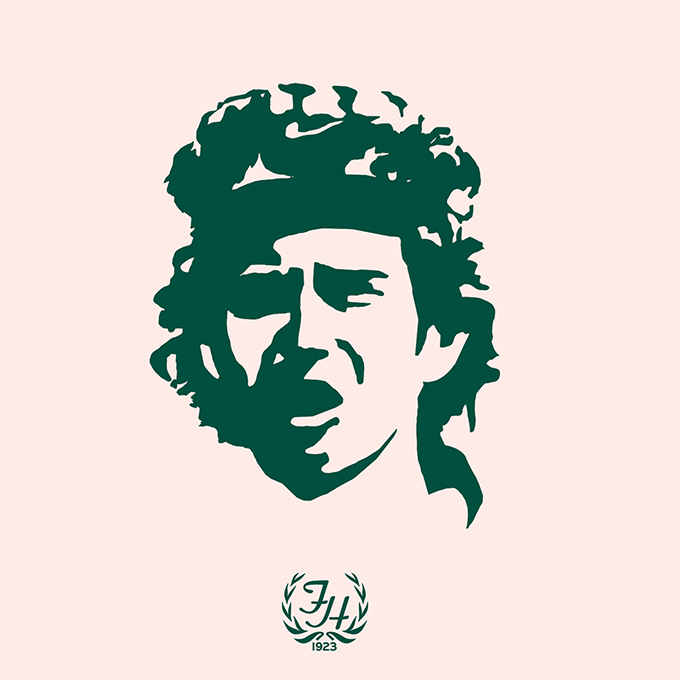
John McEnroe
Growing up in the shadows of Forest Hills in nearby Douglaston, Queens, John McEnroe got his first look at high-level professional tennis as a ballboy at the U.S. Open at Forest Hills in the early 1970's, where he also regularly played in junior tournaments beginning at the age of eleven. McEnroe exploded on the international tennis scene in 1977, at age eighteen becoming the youngest man to reach the semifinals at Wimbledon. A few months later at Forest Hills, he nearly equaled that feat, reaching the fourth round in the last Open played in The Stadium. He went on to make The Stadium his own in the Tournament of Champions played in the 1980's, winning four singles and doubles titles while also gracing The Stadium's stage as a musician, playing guitar with the likes of Carlos Santana.

The Rolling Stones
In 1966, The Rolling Stones embarked on their fifth North American tour backing their sixth studio album, Aftermath. With Brian Jones still nominally the head of the band, the Stones arrived late to Forest Hills Stadium and put on a short performance marked by screaming girls and flying lipstick. At one point Jones had to tell the audience to stop throwing lipstick after being struck several times in the head. While their set was short, the Stones packed in the hits, opening with their classic version of the Crickets' "Not Fade Away," then moving through a languid version of "Time is On My Side" made nearly inaudible by the screaming teenage girls. They ripped through "Get Off of My Cloud" and "19th Nervous Breakdown," and ended the night with "(I Can't Get No) Satisfaction." The set and the show marked what was to be the last chapter of the Brian Jones era of the Stones as the years following marked a shift away from Jones' complex rearrangements of blues covers toward the Jagger and Richards' original songwriting. Brian Jones would officially leave the band three years later, in June of 1969, due severely compromised health from years of heavy drug and alcohol use. In July of that same year, Brian Jones was found dead at the bottom of a pool at Crotchford Farms, his estate in East Sussex, England.
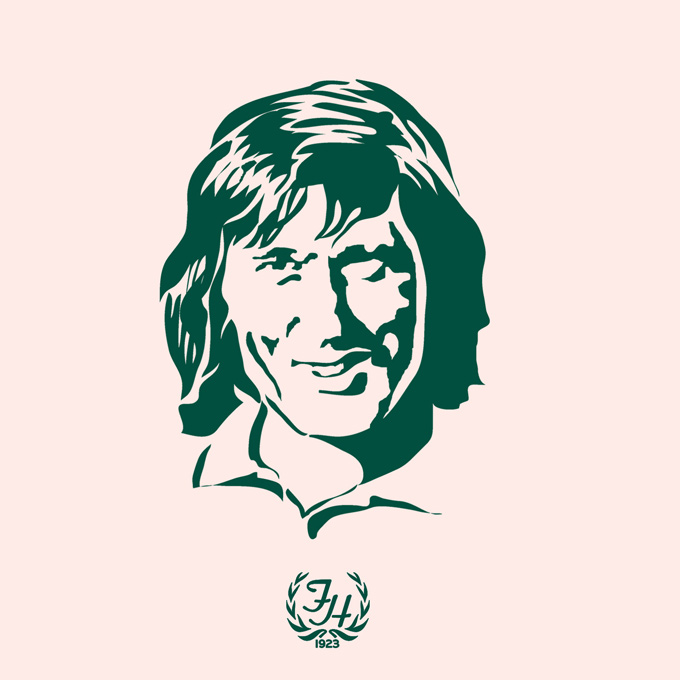
Ilie Năstase
The tennis court was Ilie Năstase's stage and no one entertained fans like the gifted Romanian. He was tennis' original bad boy of the 1970's, inspiring John McEnroe and others to let their feelings flow. Often acting like a class clown, Nastase seemed to welcome the role of the villain. In 1972 he became the No. 2 player in the world, owing to U.S. Open victory in a five-set final over Arthur Ashe at Forest Hills Stadium. Two months before, at Wimbledon, Năstase narrowly lost to Stan Smith in an epic five-set final that became one of the more exciting championship matches of the era. Like McEnroe, Năstase was considered one of the more gifted tennis players in history, but became as well-known for his ability to entertain and amuse spectators with his antics. Even during a crucial phase of a match he was likely to do something bizarre that would entertain the crowd. In some cases, Năstase would humorously protest line calls by playfully rubbing out the ball mark on clay courts with the toe of his shoe. In other cases, his questioning of a ruling wasn't so cordial and it led to fines, disqualifications, and suspensions. Năstase was also known as "Nasty" - as accurate a description as any. His game was "nasty" in the proverbial sense, and his combative personality was not quite pristine, but dark and unpredictable.

Diana Ross
Diana Ross first played the stadium on Saturday, July 29, 1967, as one of the members of the Supremes in an electric performance. She returned the following year, co-headlining with Stevie Wonder on one of the great bills in the Stadium's history - leading the band this time as Diana Ross and the Supremes. It was another remarkable year for Ross and The Supremes, capped off with the single "Love Child" marking their twelfth number one hit over the previous five years. One year later, she left The Supremes and began branching out into acting and touring as a solo artist. On June 7, 1996, six months after she played the halftime show at the Super Bowl, Diana Ross returned to play the Stadium for her final time - this time as a solo artist. With performances in 1967, 1968, 1977, 1980 and 1996 Ross is the only performer to play Forest Hills Stadium in four different decades.

Bill Tildon
Forest Hills Stadium could be called The House that Bill Tilden built. In 1950, The Associated Press named Tilden the greatest player of the first half of the century and crowds numbering over 13,000 gathered here to see "Big Bill" play. In 1923, his popularity pushed the West Side Tennis Club to create a permanent stadium structure to accommodate his throngs of fans. Tilden won the U.S. Championships seven times at The Stadium through the 1920s, reaching the final a record ten times. Tilden's Davis Cup teams were equally dominant, winning seven straight titles from 1920-26, with The Stadium as a frequent host of the contests.
A writer, thespian, and journalist by trade, Bill Tilden was an unlikely champion, winning his first U.S. Championship at Forest Hills Stadium at the advanced age of 27. He grew up in a wealthy family in the privileged environs of Philadelphia in the shadows of The Germantown Cricket Club, where he learned to play. Tilden was a lifelong student of the game, and he wrote about every aspect of it. He produced books and instructional movies on tennis that were studied so extensively throughout the world that "Tilden is Tennis" became a common phrase. Tilden assumed the role and title of journalist for much of his career to get paid to play in the Grand Slams of tennis, which allowed entry to amateurs only until 1968. In 1925, his influence was so great that he made more money writing about playing in the tennis tournaments he was winning than Babe Ruth earned playing baseball. In the 1930's Tilden started the first professional tennis tour, which made frequent stops at The Stadium.
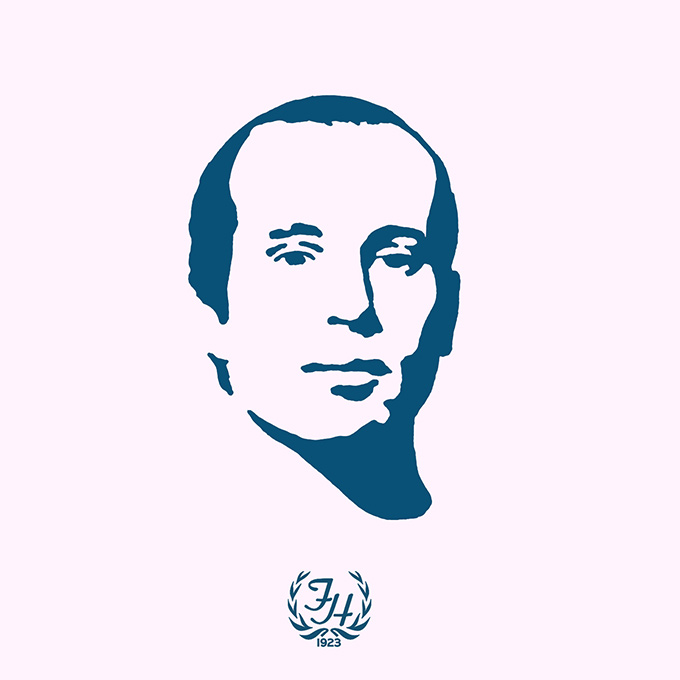
Paul Simon
Paul Simon, a graduate of Forest Hills High School, first played the Stadium in 1967 as one half of Simon and Garfunkel. The show was part of an oddball billing that had the Doors open the show to an indifferent crowd. The Doors' set went poorly, and 48 minutes after taking the stage, Jim Morrison slammed his mic and stormed off. Simon and Garfunkel returned to The Stadium again twice in 1970, in what would be their last shows before breaking up. They closed the final show with their hit from that year, "Bridge Over Troubled Water."
Simon returned as a solo artist 46 years later, ending his 2016 tour with a pair of performances that brought his career full circle to his home-borough - Queens. The second show - the last of his tour - began with an hour and twenty-minute rain delay. However, much to the delight of the crowd, Simon gave no indication of cancellation or postponement. With yellow ponchos prevalent throughout the audience, Simon ripped through a two-hour-plus performance that included eight encores. Simon's voice sounded a little husky at first but loosened up as the night went on. By the end of what Simon announced would be his final major concert, he had more than satisfied the drenched audience.

Guillermo Vilas
Known as the "Young Bull of the Pampas," the Argentinean-born Guillermo Vilas was as athletically and intellectually intriguing as any player who ever played in The Stadium. Vilas was a published author of poetry and a celebrated guitarist, and he set an Open Era record by winning 46 matches in straight sets. In 1977, Vilas embarked on his finest year on the tour, compiling a 145-14 record while winning 17 of 33 ATP singles championships, culminating in a victory over Jimmy Connors in the last U.S. Open Championship match played in Forest Hills Stadium. After his win, Joyous fans carried him on victory laps within The Stadium as though he were a triumphant bullfighter.
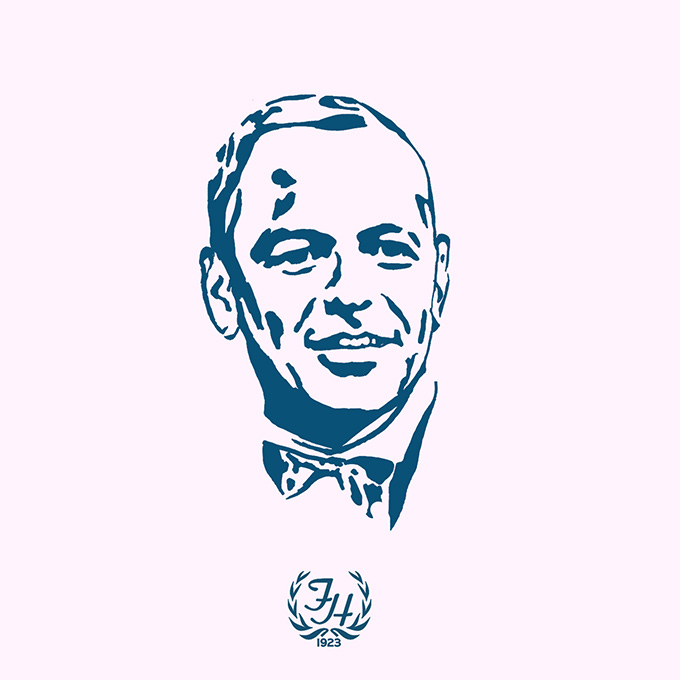
Frank Sinatra
Frank Sinatra came to the stage in July of 1965 for a three-night stand at the Stadium that drew more than 45,000 people. Backed by the great Count Basie Orchestra, under the direction of Quincy Jones, Sinatra opened the first show with "Get Me To Church On Time" and moved effortlessly into "Fly Me to the Moon." By all accounts, Sinatra was a smash, having moved away from the softer and more sentimental sound of his Dorsey and Columbia days, engaging the sold out crowds with the vibrant swinging style of a jazz soloist. Those nights saw him in dialogue with the legendary Basie men who helped tune up his numbers to a romping pitch, occasionally taking over for The Chairman of the Board . He performed twenty songs each night, with each set running over 90 minutes, punctuated only by a single tea break. On the first night, Louis Armstrong appeared for a special citation of "Hello, Dolly," during which Sinatra changed the words of the chorus to "Hello Louis" as Armstrong, a Queens resident, walked on stage.
Sinatra returned to the stadium twelve years later, in 1977, for a two-night stay, this time backed by the Joe Malone Orchestra directed by Bill Miller on piano. He opened both shows with "Night and Day," worked through a somber "My Funny Valentine" followed by an off-color monologue that led into a raucous "My Kind of Town." Sinatra saved "My Way" for his thirteenth song and ended both sets with "It was A Very Good Year" - only to return with "The Lady is A Tramp" as an encore.
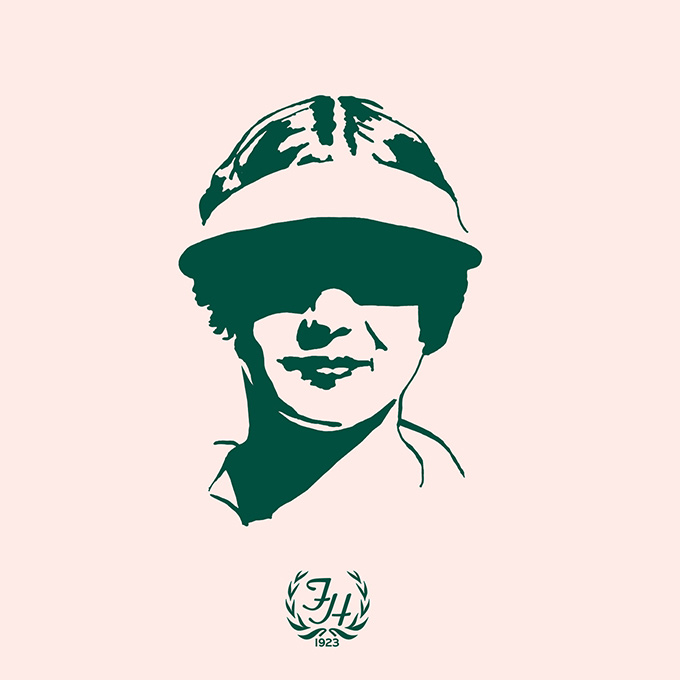
Helen Wills
When Forest Hills Stadium opened in 1923, seventeen year old Helen Wills Moody quickly became its female face. With the shadow from her iconic white visor concealing her eyes and her trademark icy demeanor, she captivated the crowds, winning the U.S. Championships a remarkable six out of the first seven years they were held at The Stadium. Growing up the daughter of a wealthy surgeon in Berkeley, California, she received her first tennis racquet at age fourteen along with a membership to the Berkeley Tennis Club. With the nickname "Little Miss Poker Face," Moody took the mantle from France's Suzanne Lenglen as the greatest woman tennis player of the first half of the century. From 1927-1933, Moody won 180 straight matches, including fourteen of her nineteen career grand slams singles titles. Wills was the first American female athlete to become a global celebrity, making friends with royalty and film stars despite her preference to stay out of the limelight. Charlie Chaplin was once asked what he considered to be the most beautiful sight that he had ever seen. He responded that it was "the movement of Helen Wills playing tennis."
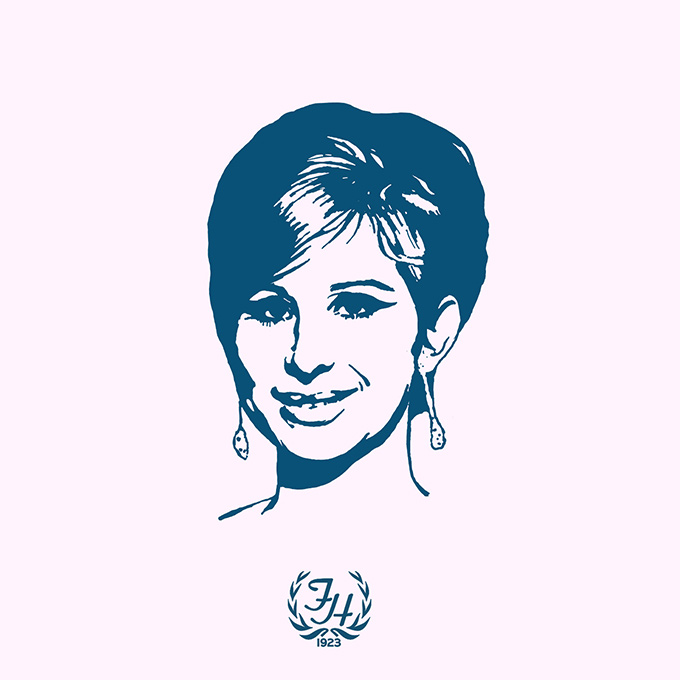
Barbra Streisand
Actress, singer, and filmmaker Barbra Streisand first found fame on Broadway, but one night in July of 1964, 22 year old Streisand traded Manhattan for Queens, taking the day off from her smash-hit "Funny Girl" to perform to a sold-out crowd at Forest Hills Stadium. Wearing a thin purple, blue, and green gown that she referred to as "this nightgown," she sang to the crowd past a vast empty lawn the size of three tennis courts but treated the surroundings as if they were part of a more intimate affair. Writing about her performance, New York Times' John S. Wilson observed, "Much of Miss Streisand's charm lies in her sense of the ridiculous, which enables her to transcend the mechanical difficulties that inevitably crop up when a person attempts to treat an audience of 15,000 as though it were just a handful in a dark little club. She wrestled with her microphone, climbed in and out of its wires, tried to avoid falling off the stage with an inventive humor that added immeasurably to her performance." Though the overcast sky threatened to douse the attendees, Streisand managed to beat the weather with a set that opened with "Any Place I Hang My Hat Is Home," reached a crescendo with "Cry Me a River," and closed with a rollicking version of "Happy Days Are Here Again."

